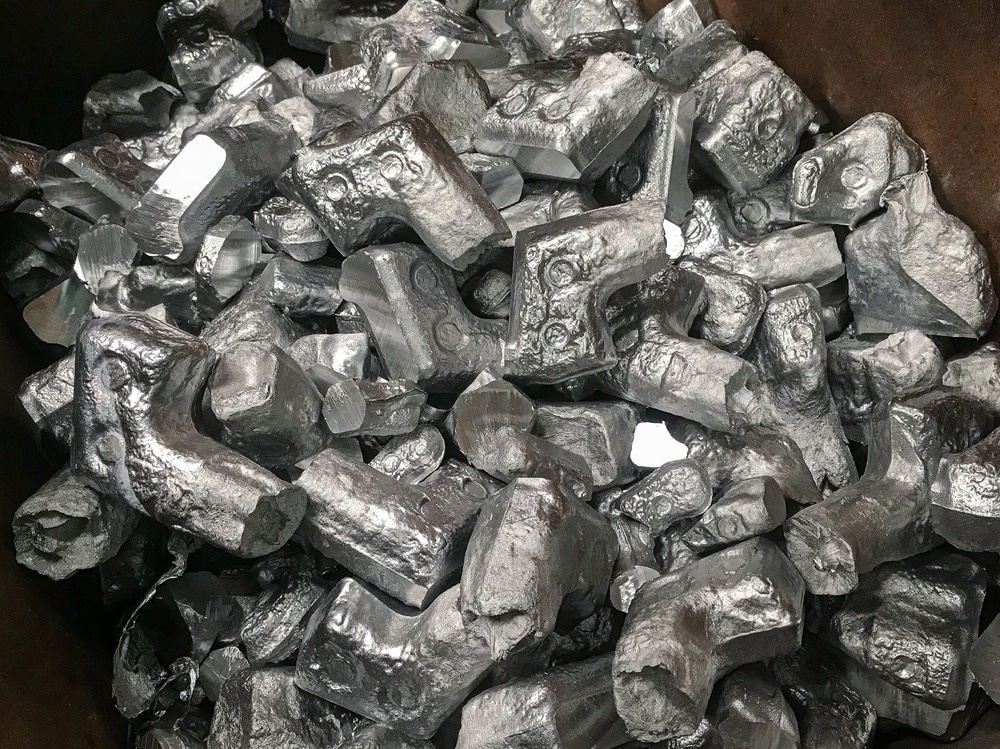|
Recent widespread publicity on the increasing use of light metals in the transport sector, replacing steel, has possibly overlooked the tried and proven technology of forged aluminum in a wide range of applications.

Image Credit: KickaPoo/Shutterstock.com
It is clear that some of the emerging casting technologies deserve close examination when considering fabrication options available to the designer, however, the characteristics of a relatively simple forged design often provide the desired weight and strength at a low cost.
These characteristics are clearly understood by some Australian automotive suppliers, as some new products are planned to be introduced in the near future with forged aluminum as the preferred means of fabrication.
Strength
When forged and heat treated, the light (SG=2.7) and common aluminum alloys exhibit some mechanical properties comparable with many grades of steel (SG=7.8). The strength-to-weight ratio is therefore far superior. For example, the alloy 2014-T6 has a typical UTS of 485MPa, exceeding that of many grades of steel, and all commonly used Al and Mg casting alloys.
Unlike some casting and manufacturing processes, forging is always porosity free thus allowing relatively straightforward heat treatment processes that significantly improve selected mechanical characteristics. The lower cost 6061 Al attains typical values of 310MPa, which is also superior to, for example, A356 (or 601 type) Al casting alloy, whether that alloy is semi-solid cast, squeeze cast, or gravity cast. Further fabrication by welding is also available with 6061 aluminum, opening up opportunities for many other applications.
This strength comparison is only available in the published data, and so what is not being reviewed is the clear advantage forged aluminum alloys exhibit over all other wrought products when the forging has been designed to provide optimum grain structure to suit the application. A combination of hot and cold working of forged aluminum alloy can allow strength considerably in excess of the “typical value”, allowing a single process to greatly assist both static and fatigue test results, and so should be considered when assessing a new application.
Lead-Time
A typical forging die can be designed and manufactured in Australia in about 6 weeks, and toolmakers are initiating cost-saving technology-based techniques to further reduce this time frame. Generally, forging businesses have self-contained tool rooms, which give them great control in both constructing tooling and undertaking revisions and die maintenance on a timely basis. Some alternative light metal fabrication techniques require more complex tooling, which requires upwards of 10 weeks for tooling design and manufacture, and often much longer.
“Time to market” is a common catch-cry, and the forging industry is well positioned to provide quick lead-time solutions.
Surface Finish
A wide range of surface finishes can be produced with forged products, from very smooth surfaces to relatively sharp serrations, and this may facilitate further surface finishing or be a functional attribute of the part design. Some alloys, like 6061, have desirable anti-corrosion characteristics without any further surface treatment at all.
Cost
In applications where several fabrication options are viable from the functional perspective, the cost will be a major driver. Forge tooling is generally cheaper than, for example, high-pressure die cast tooling, and the production rate is higher. Offsetting this is generally higher raw material costs, associated with the necessary alloying of raw materials to provide desirable heat treatable characteristics. Consequently, many aluminum forgings are used in highly stressed applications, although this is not always the case.
Design Flexibility
As the reader may be aware, not all shapes can be forged, however, on the basis that it will come out of a die, a tooling designer will provide surprising flexibility on what can be produced given the size of the available equipment.
As with all fabrication options, it is important to review the “manufacturability” of a proposed design as soon as possible in the process to ensure that optimum contours are suggested. The increased use of 3D modeling packages and related 2D drawings allows a client to electronically transfer models to a forging business early in the design phase to have suggestions on, for example, blend radii and parting-line position to provide optimum strength and die life.
Fatigue life may be an issue in some applications, and so if a product is migrating from a steel equivalent, then a review of fatigue stresses may be desirable so that all performance criteria are met with a new aluminum part. Although most aluminum forging in Australia is “closed-die”, the history of forged aluminum sees a large number of very large “open die” forgings used in the aircraft industry.
Consequently, the physical size of the component may not restrict the use of a forged component although initially it may appear a daunting task.
Summary
While there are clearly applications now and in the future for many of the relatively, new casting techniques, the combination of qualities of forged aluminum continues to be the ideal solution for many applications where light weight and strength are desired at low cost. Australian manufacturers are increasingly specifying these properties, and forgings are being produced locally at competitive rates.
More from AZoM: Aluminum Bronze Forgings (UNS C64200) - Mechanical Properties
|